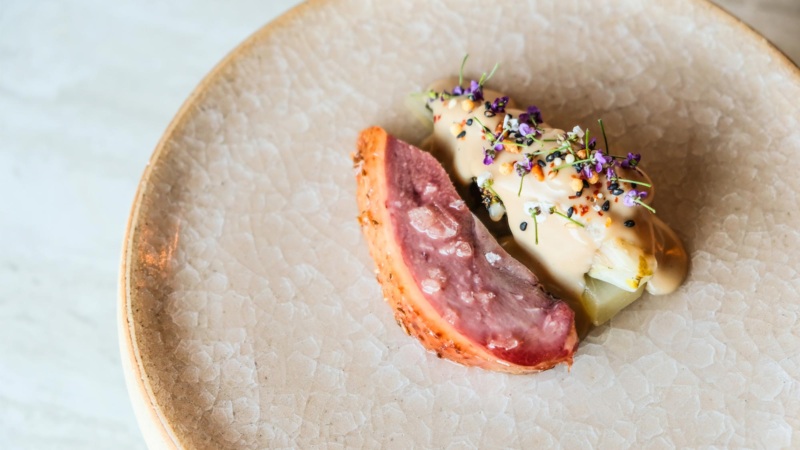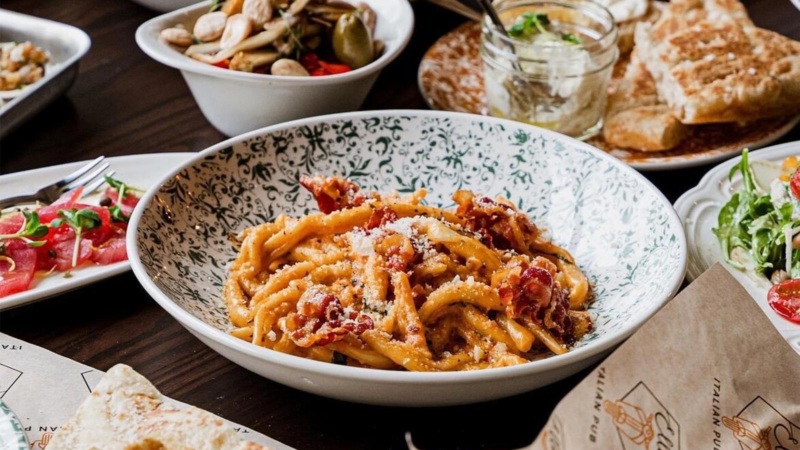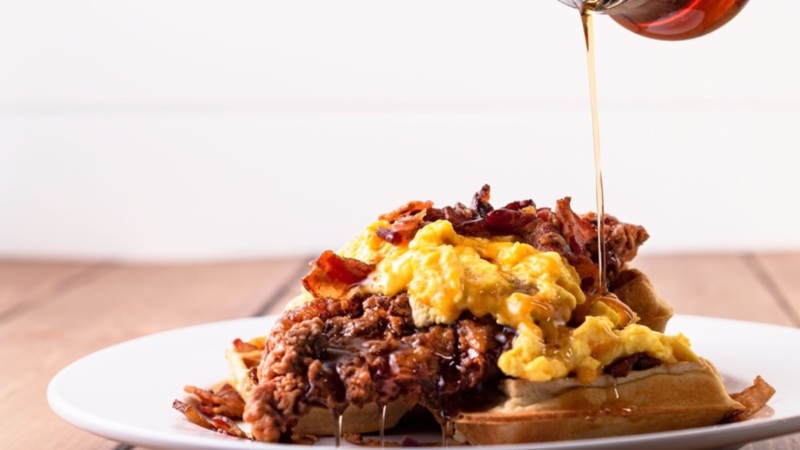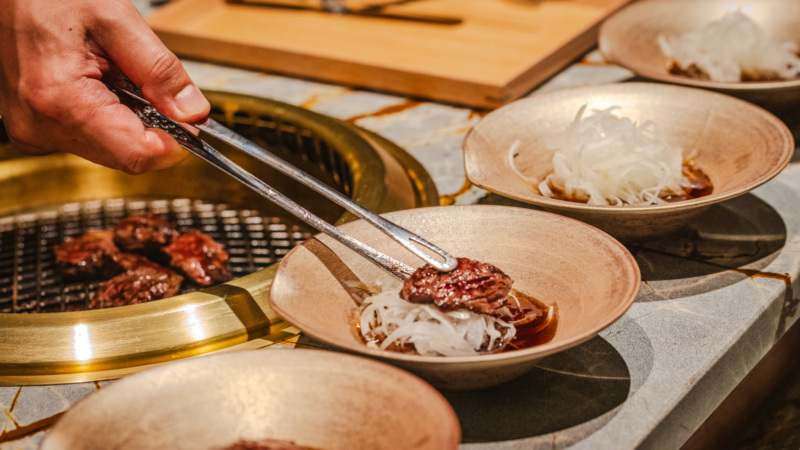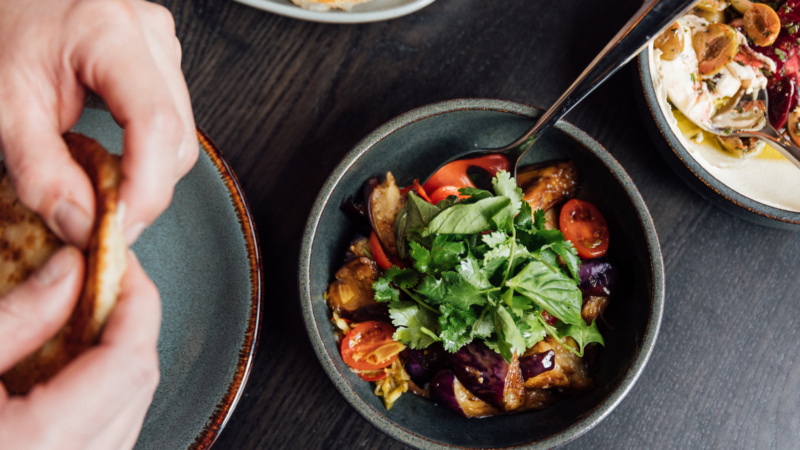
How Galit Defines Its Unique Midwest Take on the Middle East
At Galit, the Michelin-starred Middle Eastern restaurant in Lincoln Park, chef and partner Zach Engel taps his childhood memories of Israel to help craft the menu. Multiple trips while his father was in rabbinical school allowed Engel to trace the historical roots of Israeli cuisine, and explore how immigrant culture shaped modern iterations. Galit partner Andrés Clavero, meanwhile, is partly of Palestinian descent, and together the two have created a menu combining their different perspectives in perfect harmony.
“People say food is political, but we don’t have that viewpoint,” Engel says. “Food lacks opposing sides. It’s coming together. That’s how we approach it.” The pandemic forced Galit, like every restaurant, to get scrappy to survive. They did take-out, initially to Engel’s chagrin. But some of those to-go-friendly dishes ended up staying on the menu when they could reopen, with a more refined finish.
“These dishes show different phases over the last two years,” he says. “I’ve held onto stuff since we opened. We’re not eliminating history as we move forward, we’re keeping it intact. We have a lot of stories to tell.” Here, in his words, are five dishes Engel feels paint a picture of Galit’s choose-your-own-adventure menu.
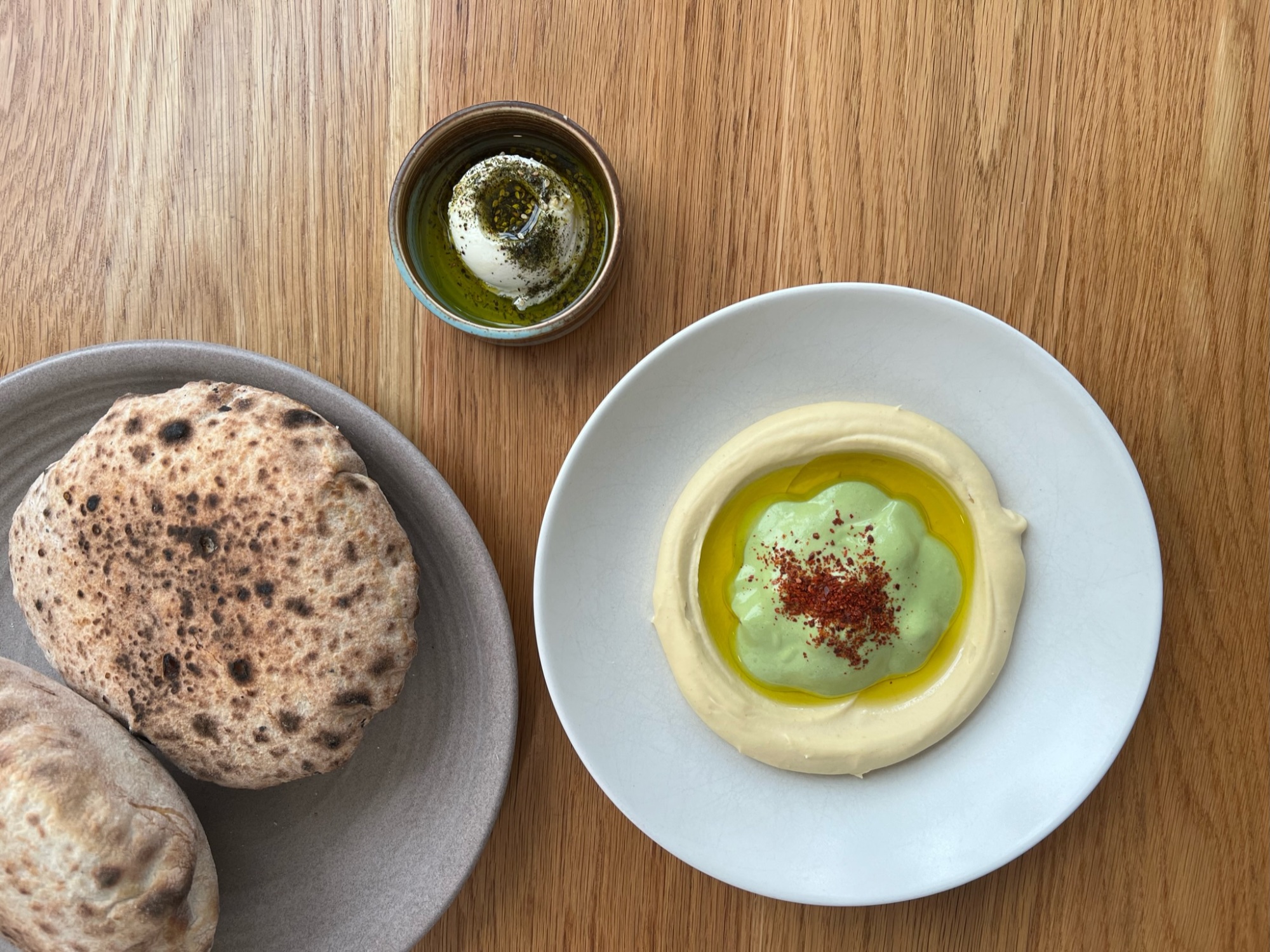
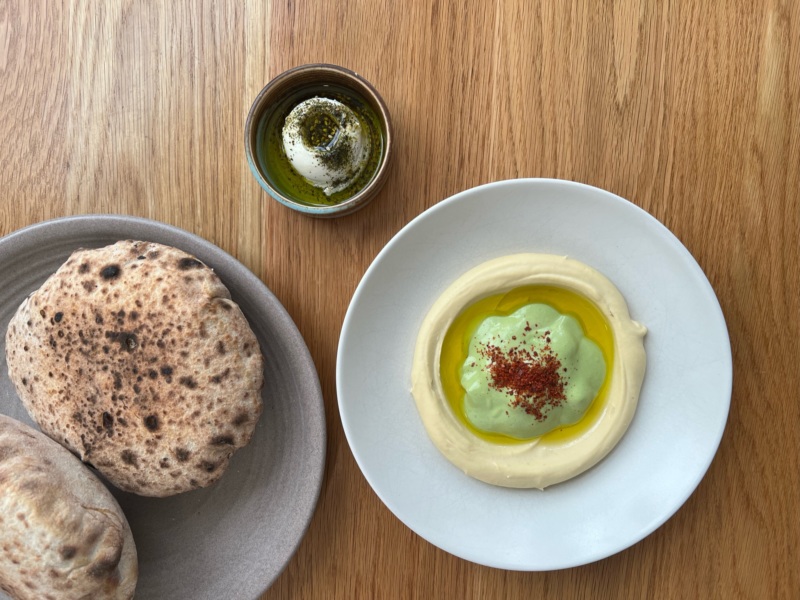
1. Hummus
(tehina, sumac, nana mint, olive oil)
“One of my favorite places to eat in the world is a hummusiya called Abu Hassan, run by an Arab family who has been in Old Yafo (Tel Aviv) for generations. It’s a very small restaurant — they only make three types of hummus, and to me it’s the Platonic ideal. This is a recipe I developed while in New Orleans with Alon [Shaya], and the goal was to achieve Abu Hasson-level hummus.
It starts with ingredients, and then the technique. We use Soom, a tahini brand out of Philadelphia with Ethiopian Humera sesame seeds, and Rancho Gordo chickpeas. The way to get smooth hummus is to take the skins off the chickpeas. I realized I could do a process similar to nixtamalization with corn. We add a little bit of baking soda and heat up the chickpeas, then rise off the baking soda until the skins float to the top. It helps break down the cellulose and pectin in the cellular walls of the chickpea skin, causing it to rupture and fall off. We put the peeled chickpeas into a 36-quart, seven horsepower food processor. It breaks them down and aerates them while it’s pureeing, creating a super-rich emulsion. But it starts with having great chickpeas and tahini. Every time I taste it in the blender, I’m thinking about Abu Hassan and whether I’m getting that ethereal experience.”
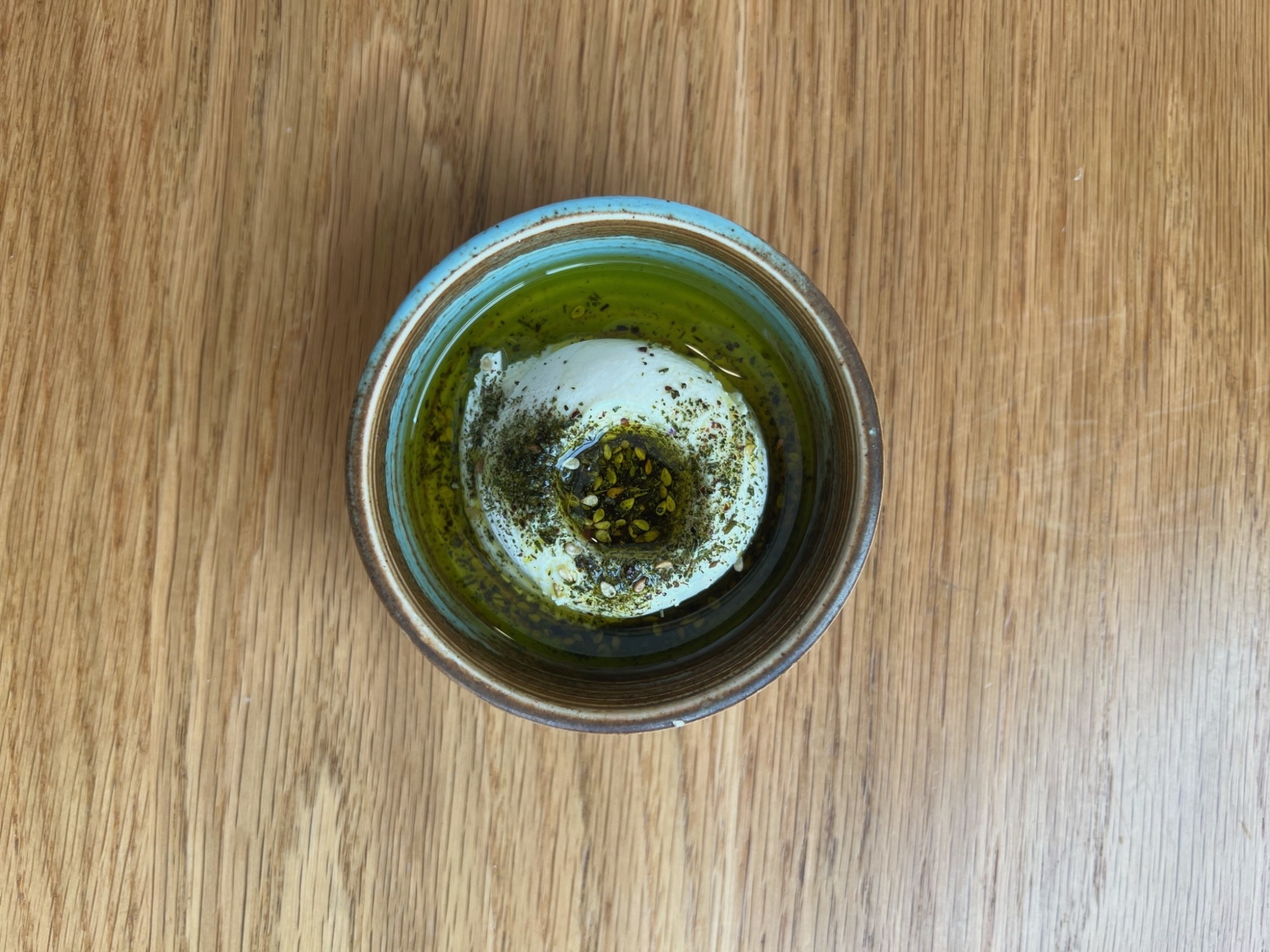
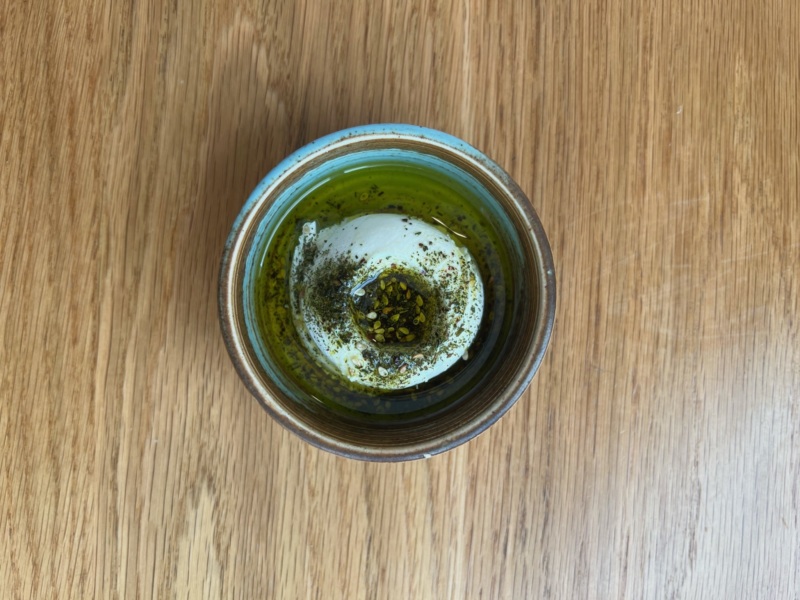
2. Labneh
(hyssop, sumac, sesame)
“Our big thing when we opened was cooking Middle Eastern food with ingredients from the Midwest. Obviously there are limits, but this one took a lot of planning and effort to have it year-round. Labneh, za’atar, and oil is just a classic in Israel. I’d wake up in the Carmel Market in Tel Aviv, grab an iced coffee, and go to a stand where this woman would make laffa to order. As the bread cooked, she spread labneh, za’atar, and a drizzle of olive oil on top, and rolled it up. That was my breakfast on my way to the restaurant where I was working every single day.
Our labneh uses yogurt from Lamers Dairy in Iowa. We blend it with another whole milk yogurt and season it with salt aggressively, then spread out in big containers lined with cheesecloth and strain it for two days. The bacteria from the two yogurts mix, eat the salt, and develop a little sweetness while all the extra liquid gets strained out. We put it in the fridge and save it for later.
I was set on making my own za’atar and I needed to find a couple of things. First, high-quality unhulled sesame seeds. Then the sumac. When I moved to Chicago, I was introduced to this guy Scott [Eirinberg], who owns the Reluctant Trading Experiment. He sources the freshest spices and seals them so they don’t get dry. He gets sumac with a moisture content you never see. Then I wanted to not use thyme or oregano for a za’atar, but really use za’atar, which grows wild in the Middle East. It’s in the hyssop family. At the Green City Market when I first got here, I met [the team from] Smits Farm in Chicago Heights. It’s father/daughter-run and they mostly grow herbs. They grow hyssop for me and we buy 200 to 300 pounds of it a year. We dry it all in house, remove it from the stems, grind it, vacuum-seal it, and make batches of za’atar to store for the winter. And then olive oil. That’s it.
To serve, the labneh is in a little dome with a hole in the top, we sprinkle the za’atar in there, shoot some olive oil in, and spread the spice and olive oil around it. That’s it. It’s a simple thing made at great lengths with the most local ingredients you can get. That, to me, for a long time, was the most Galit dish at Galit.”
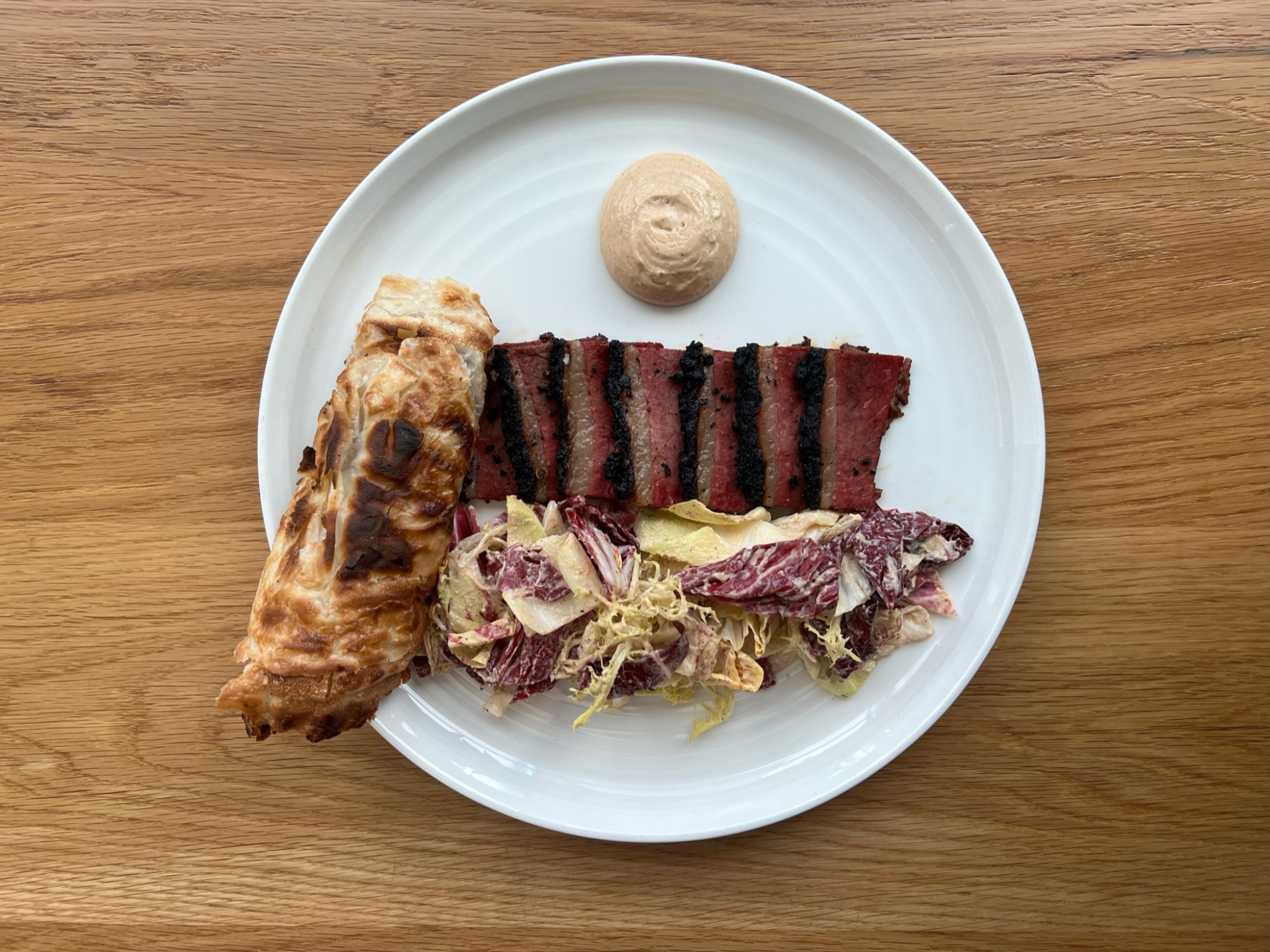
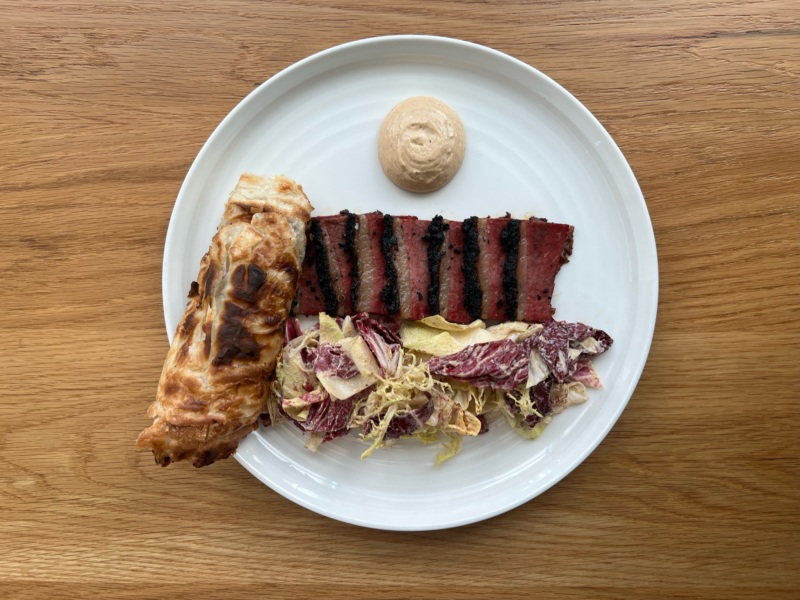
3. Pastrami (Armenian meets Lower East Side)
(urfa Caesar, radicchio, malawach)
“During the pandemic, [chef] Ed Lee from Louisville and his foundation the LEE Initiative gave money, like $20,000, to farms that worked with restaurants. You could apply to be a restaurant in the program to get $5,000 in credits with the farms to buy ingredients from four different farms. We had $20,000 in inventory available at no cost to us. It was a brilliant idea. We got placed with Slagel Family Farms, where we buy all our proteins, except lamb. I had a conversation with them and asked what they needed to sell. They needed to move brisket and turkey thighs. So we decided to make the best pastrami we could, which we put on a sandwich during our takeout period. When we reopened, we didn’t want to stop making it. It was getting better and better every time — the smoke, the crust — so we decided to keep it on the menu.
I wanted to not go with mustard and rye. We asked our farmers what was available. One had a lot of beef fat, so we made a beef fat Caesar dressing and added anchovy extract, urfa peppers, and roasted garlic. It’s not a subtle dish. The menu says ‘Armenian meets Lower East Side,’ but it should also have Texas because it’s smoked like a brisket. Pastrami is derived from basturma, an air-cured meat from Armenia. Jews from Armenia and Romania ended up in New York and tried to make it, but they couldn’t because of humidity and pollution. So they smoked it in the smokehouses instead. Ours is a traditional pastrami spice, but I added basturma spices [paprika, cumin, and fenugreek] to tell the story of how it moved around the world and became something different.”

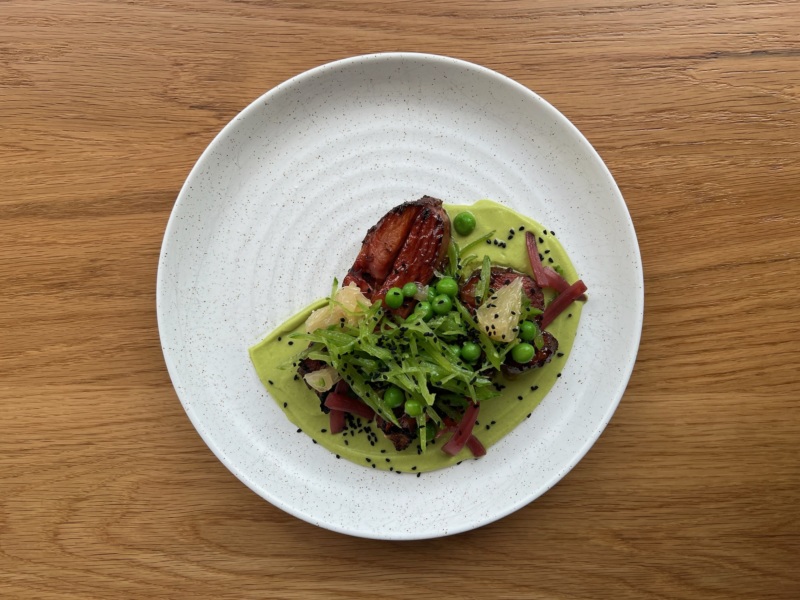
4. Smoked Turkey Shawarma
(peas, harissa, fermented honey, pomelo, orange blossom)
“Turkey is a prevalent protein in Israel, especially when lamb is hard to come by. You get more bang for your buck with turkey. There’s a lot of turkey shawarma around and I think turkey thighs are delicious. We don’t have a traditional shawarma spit, but we wanted to replicate it. We season the thighs with shawarma spice and salt for a couple days, and then smoke it in the charcoal smoke box in our hearth. With traditional shawarma, the meat is stacked up and the fat drips down and adds moisture. But because we’re smoking them as individual thighs, we don’t have the fat. I still wanted to make them more tender, so we confit them in chicken fat for 12 hours. Then we cut them into thick slices, as opposed to shaving them. We’ve kept the shawarma on the menu and have had different versions. Right now it’s spring, with peas, honey, and orange blossom.
I look at those last two dishes together [pastrami and turkey shawarma] and see how the restaurant has changed in the last two years, from when we were running on limited resources. There are instances where you put your hands up and scream for help. I felt like doing that a lot in 2020, but the thing I knew we could do was just cook. You feel better about the situation. Selfishly, I knew I needed an outlet to feel fulfilled. We were open a year and it looked like we weren’t going to make it. It was a little survival tactic, but also a little, ‘Fuck it, if we’re going down, we’re going down swinging.’”
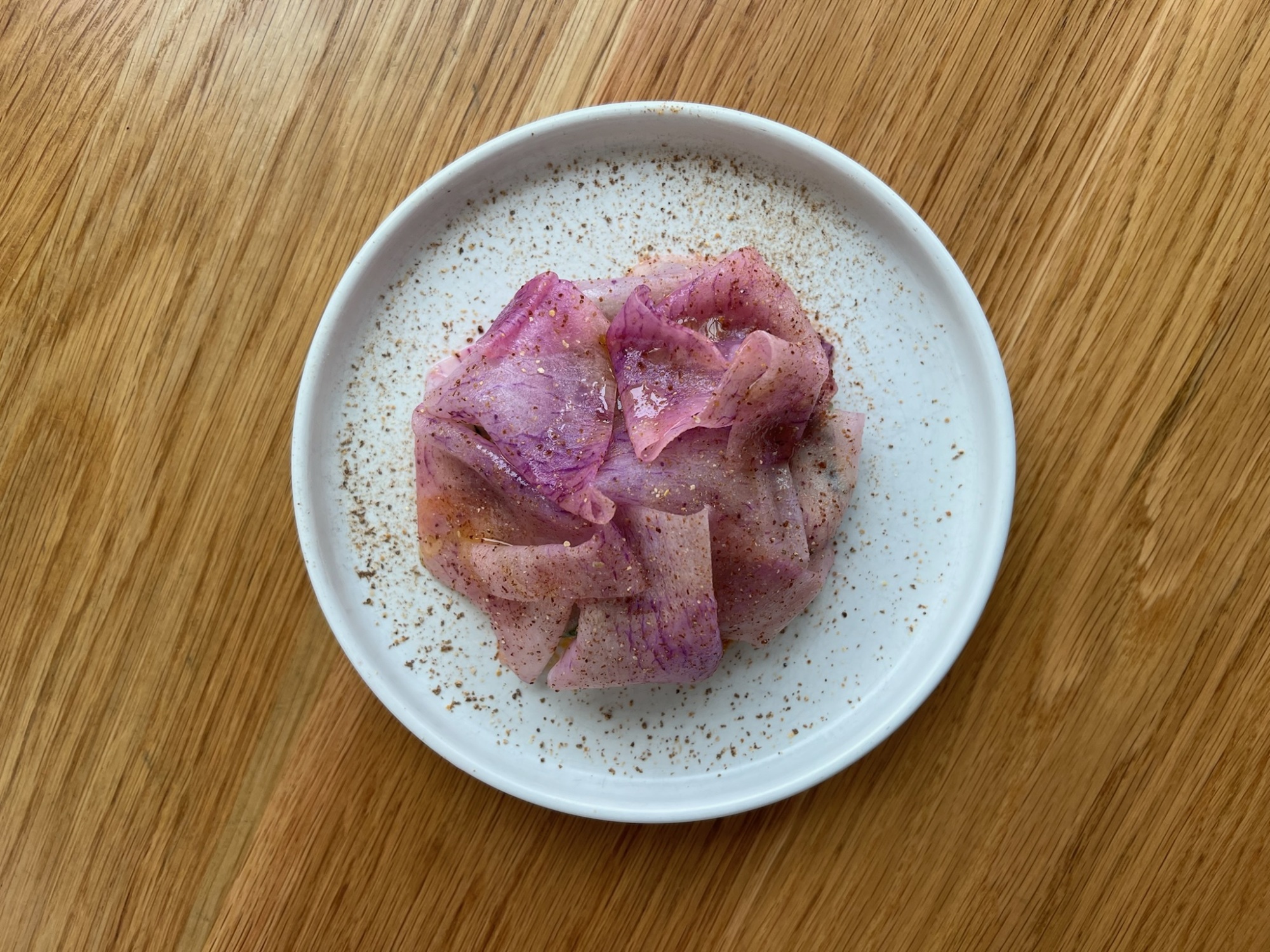
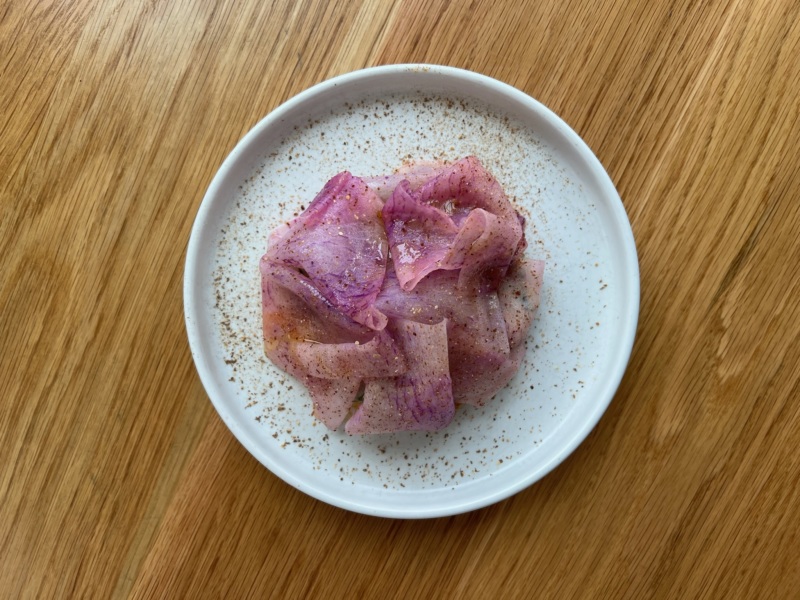
5. Tunisian Salad
(hearts of palm, sauce gribiche, harissa, olives, walnuts)
“I really enjoy Tunisian salad, a North African version of a salad niçoise. In North Africa it’s harissa, olives, cucumbers, tomato, and peppers, some mild, some spicy. It’s a classic combo. I wanted to get these hearts of palm in because another pickled soft thing is delicious. Tunisian salad usually has a hard-boiled egg and olive oil-poached tuna from a can, but I really didn’t want to put an egg on this dish. So I was like, ‘Screw it, I’ll make the whole thing vegan.’
So instead of egg, I did a vegan sauce gribiche. The sauce is some of the hearts of palm poached in a barigoule, a traditional poaching liquid for artichokes with white wine, garlic, onion, and salt. I minced them up and they have a hard-boiled egg white flavor and texture. The vinaigrette has a lot of Dijon, white wine, and olive oil with nutritional yeast and minced toasted walnuts, which gives it an egg yolk flavor — a rich, protein-heavy, funky barn floor vibe, with capers, pickles, and parsley. I put that on top of hearts of palm seasoned with Persian dried limes. It’s potent and I love it. The finishing touches are some olives tossed in our harissa, radishes, and more Persian lime.
You don’t miss the tuna. It’s vegan, but doesn’t feel vegan. I love to cook vegan food at the restaurant to be accommodating, but also because so much of the food in the Middle East naturally is. We have a lot of luxury in ingredients in the West that aren’t readily available around the world and I like the creative challenge. I captured the dish in its traditional form, but in a fun and creative way. From a cook’s perspective, I pushed myself to create something that focused on the concept of a dish, but with particular unique ingredients to make it different.”
Ari Bendersky, a lifestyle journalist specializing in food, wine, spirits, and travel, has written for New York Times, WSJ magazine, Eater, Men’s Journal, Wine Enthusiast, Departures, RollingStone.com, and more. Follow him on Instagram and Twitter. Follow Resy, too.












